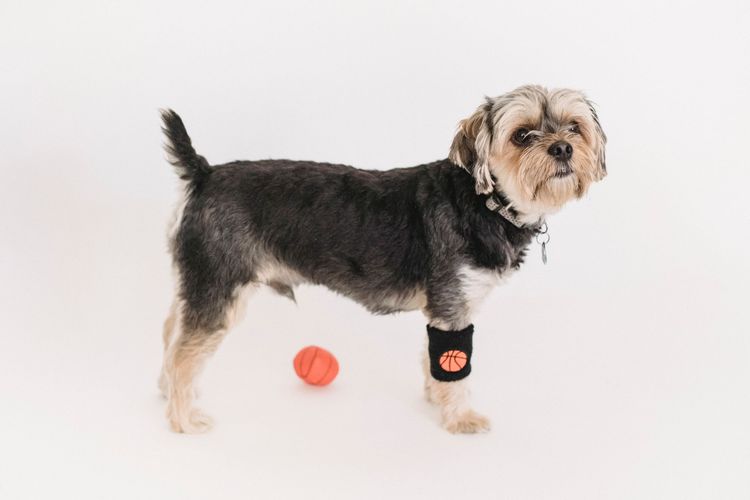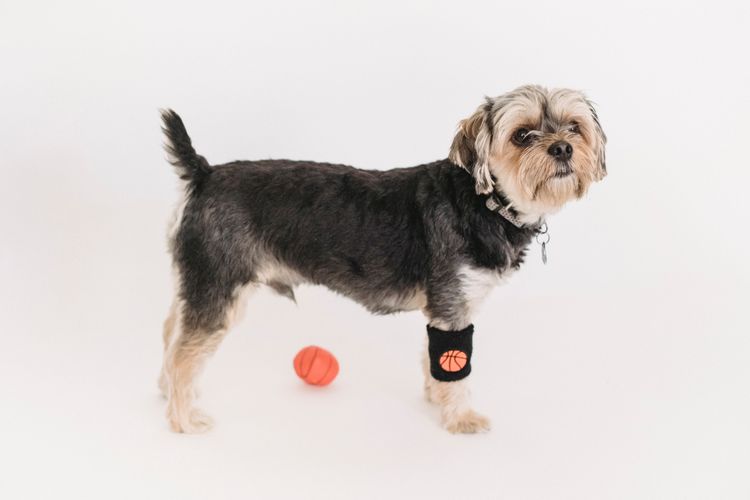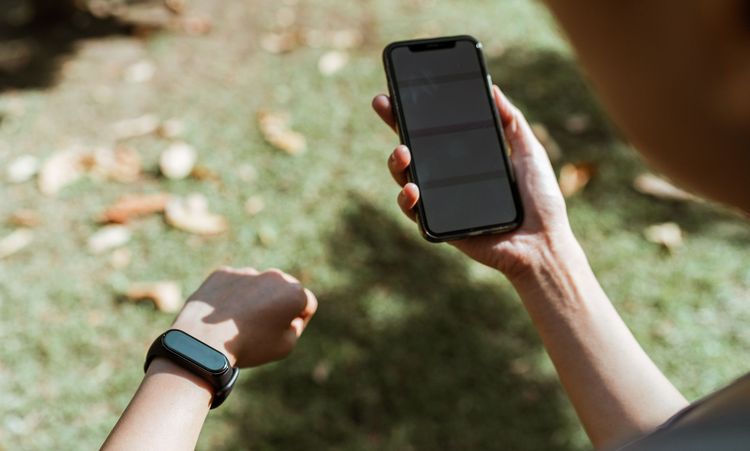🦀 Issue 129 - My Heart!
Hey y’all, I’m an hour late and a dollar short this week but wanted to get something to you anyway. I owe it to you. Literally. So here’s last week’s Crab and keep an eye out for this week’s in a couple of short days. Thank you for your support and patience, and let’s learn about the heart. With three pieces, one on hypotension, another on BFR for COPD (yes, really, sort of) and a last from the recent archives on why it’s important to take BP.
With that, let’s dive in!
Orthostatic vs. Exertional Hypotension - What They Are and What To Do
The Gist - This paper from the Journal of Acute Care Physical Therapy is relevant across the spectrum of PT and compares orthostatic hypotension with exertional hypotension, highlighting how PTs can help with these conditions.
Orthostatic hypotension is familiar to us, technically classified as a sustained reduction in SBP of > 20mmHg or DBP > 10mmHg. Interestingly though, there are three types: Classic - a sustained reduction in BP within 3 minutes of standing, Initial - rapid and temporary (<15s) of a big BP drop, and Delayed - reduction that occurs > 3 minutes after standing. The delayed one needs watching out for as it’s a bit harder to spot. The paper notes that symptoms may be different from what you’re used to as well. Dizziness and lightheadedness are common, but only 30% of people experience them. Other symptoms are neck and shoulder stiffness that resolves with sitting, weakness, blurred vision, vertigo, and nausea. This can come up in an acute care setting, if you’re getting your patient out the door, or in outpatient if you’re just exercising in the PT gym. If patients are experiencing these symptoms, do a quick BP.
Exertional hypotension is a scarier condition. Hallmarked by a decline in SBP of >10mmHg during exercise and any evidence of ischemia. Only 5-8% of people experience exertional hypotension, but it’s a dangerous condition, often associated with coronary artery disease, aortic stenosis, mitral regurge, and other serious conditions. According to the authors:
Exertional hypotension is often a sign of existing and probably severe cardiopulmonary disease that should be reported to the medical team for further evaluation.
SBP shouldn’t go down during exercise. But how will you know if it does if you don’t take BP at the beginning? If you have any concerns, take BP.
Tell Me More - This is a great, short paper, so if you’re into this, you should go read it. It even has case studies! But if you don’t want to, that’s what I’m here for. In treatment of OH, interestingly, the authors found that education is important, and so are compression of the legs and abdomen, but marching in place and heel raises don’t work. Leg crossing, bending forward, squatting, whole body tensing, and sitting back down are the best approaches. On the cause side, Parkinson’s, diabetes, deconditioning, dehydration, overheating, polycythemia, and overeating are all common.
In exertional hypotension, there are no specific PT interventions that help. The best approach is to refer to a medical team for further evaluation. The authors also point out that a chart review to check for potential EH before starting exercise is a good idea.
And just for good measure, here’s an expansion of the above: what’s supposed to happen during exercise is an increase in SBP roughly equal to about 10mmHG per MET (for perspective, a brisk walk is about 3.5 METs and running at 6mph is about 10 METs) and DBP should stay the same or reduce slightly. Obviously, this rule doesn’t fit everyone. But a recreationally fit person or an unfit person should see something about like that. No matter what, SBP should go up a fair bit and DBP should stay about the same. Deviations from that pattern are worrisome.
Alright, paper? Here
BFR for COPD? Yes indeed.
The Gist - This curious case report discussed the use of low load BFR training on a 62 year-old woman with COPD. She had severe breathlessness, especially when climbing the stairs up to her apartment after getting groceries. Since she presented with a VO2max of just 15.3, no one’s surprised by that difficulty. For expansion on VO2Max, “Very Poor” for a woman aged 60 or over is <17.5, good is 25-30. For a 30-39 year-old woman, Good is 32-36 and Poor is 23-27. More details here.
The woman in question on the case report had “severely compromised” lower limb strength and a 6MWT or 468m (92% of normal for her age). The PTs put her through endurance training on a cycle ergometer (AKA stationary bike) and low load BFR since they believed a major factor in her stair difficulty was leg strength, with the VO2max problems being secondary. With BFR, they were able to get a significant training effect at just 30% of her one rep max, working at 70% occlusion pressure and 75(!) reps in 4 sets of leg press and leg extension.
Results-wise, she cleared the MCID in muscle strength and 6MWT, improving the latter by 44m (up to 103% of normal) and the former by about 90Nm, 12 times the MCID. Wow! She was able to climb stairs to her satisfaction and reported “substantially reduced COPD related system burden”. Cool!
Tell Me More - Obviously this isn’t generalizable (dude, case report) but it is an interesting approach to a problem. Through comprehensive exercise and endurance testing at the first visit, the PTs were able to see that it was likely weakness, not just breathlessness, that prevented stair climbing and they dove into BFR to fix it. Because they’re not crazy, they paired this up with standard endurance training, so we can’t necessarily say that the BFR made the big changes in this lady’s life, but the massive increase in lower limb strength (3x over pre-training testing) shows that it could indeed be the BFR. Still, don’t know for sure. I’ll leave with a great quote from the patient:
The LL-BFRT training caused intense sensation of muscle burning and fatigue, however, the sensation diminished quickly when the cuff was removed. I certainly felt that my muscles were the main target of exercise. The breathlessness during LL-BFRT was easy to tolerate and it was a relief for my joints that I did not need to lift that heavy weights.
Paper? Sure thing!
From the Archive: How to Take BP Correctly
The Gist - This excellent piece from the Journal of Cardiopulmonary PT is a detailed assessment of how to properly take PT. According to them, “Hypertension is the most common primary diagnosis in the United States. It is a major risk factor for coronary heart disease, stroke, and renal failure, and affects 29% of the adult US population. Twenty-two percent of persons who have hypertension are unaware that they have it.” And PTs see people so often that we’re in a great place to help monitor this. But inaccurate measures of BP aren’t helpful, especially since the paper points out that many people are borderline: “almost two-thirds of hypertensive individuals would be denied morbidity preventing treatment if the diastolic blood pressure were underestimated by 5 mm Hg; the number of persons diagnosed with hypertension would more than double if systolic pressure were over estimated by 5 mm Hg.“
So how do we do it well? Buckle up.
The blood pressure cuff should be placed on the patient’s bare arm. If necessary, clothing should be removed, and the patient/client draped, to adequately expose the arm. The sleeve should not simply be rolled up in order to gain access to the arm; it creates a tourniquet effect above the cuff. When placing the cuff on the arm, the midline of the inflatable bladder should be positioned over the brachial artery…at the mid-point of the upper arm. The lower-most edge of the cuff should be at least 1 inch (2.5 cm) above the antecubital crease so that the bell (preferred) or the diaphragm of the stethoscope can be placed over the point of the strongest palpable brachial artery pulse in the antecubital fossa without encroaching beneath the cuff….
Because of the effects of hydrostatic pressure, the position of the arm when the blood pressure is measured can also have a major impact on the pressure observed. The magnitude of this effect is 1 to 2 mm Hg for every 2.5 cm above or below the level of the heart… since muscle contraction raises blood pressure, care should also be taken to avoid the patient/client helping to elevate the limb; if available, pillows or bolsters may also be used to properly position and support the arm.
In order to avoid over inflation of the cuff, and to accommodate any systolic auscultatory gap, the clinician should estimate a maximum inflation point by palpating the radial pulse while incrementally inflating the cuff until the pulse disappears. The therapist should then wait at least one minute after deflating the cuff before reinflating the cuff to 30 mm Hg above the point where the pulse previously disappeared.
Tell Me More - They have a few more things to watch out for. I think we all know that crossing legs increases BP by about 5mmHg, so uncross those things. And forearm BPs are unvalidated and can differ up to 20mmHg from upper arm, so watch out for those too.
They also recommend that standing BP be performed in the elderly after performing seated to watch out for postural hypotension. That’s a systolic BP drop by more than 20mmHg or diastolic by more than 10mmHg.
Lastly, picking the correct size of cuff is key. Too small leads to overmeasuring, and too big is better but causes errors in both directions. Also, those automatic cuffs aren’t actually very accurate and quite suspect, according to the paper, so do it by hand and do it quick, ideally twice to verify.
Paper? Got it here. And it’s open access.
I know this was late y’all and I appreciate your patience. And I know it was short. And I’m sorry. It gets better, and I’m back on top of things going forward.
Thanks for subscribing and supporting, you are appreciated and I thank you for appreciating me too.
Have a great week,
Luke






Comments
Want to leave a comment and discuss this with your fellow PTs? Join PT Crab and get summarized PT research in your inbox, every week.